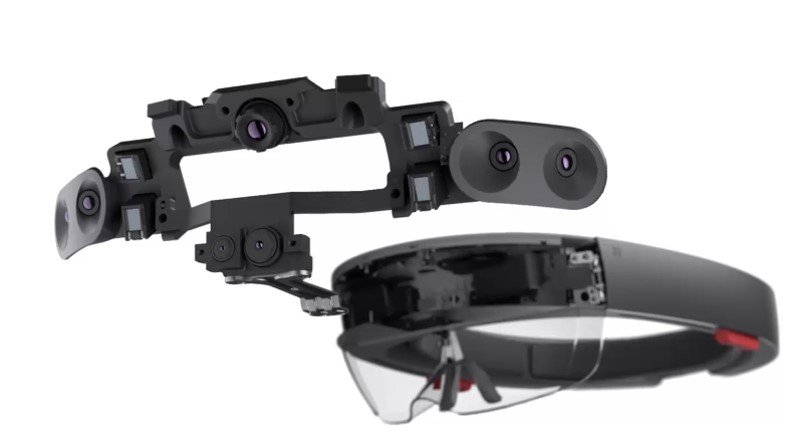These are the full hardware specifications of the Microsoft HoloLens

This morning, Microsoft finally pulled the sheets off of the ready-to-ship version of HoloLens exclusively for early-accepted developers who also slap down $3,000 for the holographic computer.
Buried within all the new videos and documentation of the cutting edge hardware is the full list of hardware, sensors, specs and more for the first-ever wearable HoloLens holographic computer system.
Let's pop the hood and see what Microsoft HoloLens version 1.0 is running.
Microsoft HoloLens 1.0 specs
| Category | Specs |
|---|---|
| Display | See-through holographic lenses (waveguides) 2x HD 16:9 light engines Automatic pupillary distance calibration 2.3M total light points holographic resolution, 2.5k light points per radian |
| Sensors | Inertial Measurement Unit, 4x environment understanding cameras, mixed reality capture, 4x microphones, ambient light sensor |
| Processor | Custom Microsoft Holographic Processing Unit HPU 1.0, Intel 32-bit architecture |
| RAM | 2GB |
| Storage | 64GB |
| Weight | 579g (1.2lbs) |
| Camera | 2MP photos, HD video |
| Audio | External speakers, 3.5mm audio jack |
| Connectivity | Wi-Fi 802.11ac, Bluetooth 4.1 LE, Micro-USB 2.0 |
| Power | 2-3 hour active use battery life, 2 weeks standby, passive cooling |
| OS | Windows 10 with Windows Store Human Understanding: spatial sound, gaze tracking, gesture input, voice support |

What's in the box
- HoloLens Development Edition
- Clicker
- Carrying case
- Charger and cable
- Microfiber cloth
- Nose pads
- Overhead strap
What you need to develop
- Windows 10 PC able to run Visual Studio 2015 and Unity

All in all, there is nothing too surprising in in that list but if something did pique your interest as standing out let us know in comments.
Source: Dev Windows
All the latest news, reviews, and guides for Windows and Xbox diehards.

Daniel Rubino is the Editor-in-chief of Windows Central. He is also the head reviewer, podcast co-host, and analyst. He has been covering Microsoft since 2007 when this site was called WMExperts (and later Windows Phone Central). His interests include Windows, laptops, next-gen computing, and wearable tech. He has reviewed laptops for over 10 years and is particularly fond of 2-in-1 convertibles, Arm64 processors, new form factors, and thin-and-light PCs. Before all this tech stuff, he worked on a Ph.D. in linguistics, performed polysomnographs in NYC, and was a motion-picture operator for 17 years.
